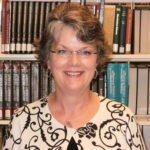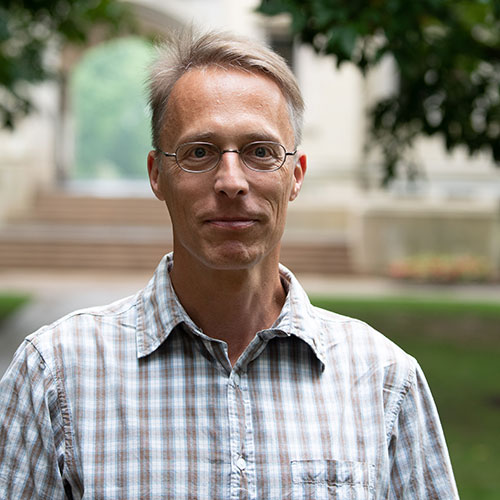
Professor Manz publishes article as part preservation, part celebration

Niklas Manz, associate professor and department chair of physics at The College of Wooster, recently co-authored an article in Chaos: An Interdisciplinary Journal of Nonlinear Science, a peer-reviewed publication. The article, “Science, serendipity, coincidence, and the Oregonator at the University of Oregon, 1969–1974” is the feature piece in the journal’s Focus Issue and is dedicated to Richard J. Field to celebrate his 80th birthday.
Field, professor emeritus at the University in Montana, along with Robert Mazo, professor emeritus at the University of Oregon, co-authored the piece with Manz. The trio’s publication serves as a historical review of the development of the Oregonator model of the Belousov–Zhabotinsky (BZ) reaction, a collection of nonlinear chemical reaction-diffusion systems. Manz explained that physicists use the model to understand and describe spatio-temporal systems with propagating fronts including, for example, stadium waves spectators create, the electrical pulse on the surface of a heart (responsible for the heart beat), expanding animal populations, and also to describe stationary systems with structures frozen in time including patterns of dots, stripes, circles, hexagons, on animal skins, plants, or rocks.
“We revisited the exciting start of a new field in physical chemistry,” said Manz, explaining that the model, “became the starting point for describing all these phenomena 50 years ago.”
Field is the sole living scientist of the Field-Kőrös-Noyes (FKN) mechanism, the first complete reaction scheme to describe the behavior of the BZ reaction. The team also developed a much simplified, mathematical three-variable model to describe the BZ reaction’s nonlinear behavior, later coined the Oregonator. It was first published in 1972 as five papers in the series named “Oscillations in chemical systems.” Mazo was a theoretical chemist who contributed but was never involved in the publications.
“One of my research projects is the ‘History of the Belousov-Zhabotinsky reaction’ and part of this project is a book with Dick Field as one of the co-authors,” explained Manz. “The now published journal article was a book chapter which felt disconnected to the other chapters. I also pursued this path after I learned that Bob Mazo was still alive. I contacted him and asked if he would be interested in traveling 50 years back in time with us.” Manz wrote about meeting with Mazo in his blog in January.
In the early 1970s, Field was a postdoctoral researcher at the University of Oregon working with Richard (Dick) Noyes and visiting scientist Endre Kőrös from Hungary. Following the 1967-68 publications of Ilya Prigogine’s Brusselator model (a discovery to explain complex chemical behavior that earned Prigogine the Nobel Prize in Chemistry), Field and his colleagues took up the challenge to connect the abstract Brusselator model with a real nonlinear chemical system: the BZ reaction.
Manz’s science history project on the BZ reaction continues with his book that’s co-authored by Field and Konstantin Kiprijanov, a science historian at the Technical University in Berlin, Germany.
“I try to meet as many people as I can to preserve their anecdotes as well as collecting physical and digital documents,” said Manz who has built a repository of information online. “The book will hopefully include complete publication lists of Boris Belousov and Anatol Zhabotinsky, and also will present newly discovered primary documents about Belousov from various archives in Zurich, Switzerland and Moscow, Russia. I translated the German documents, and the Russian documents are in the process of being translated by Ellen Vayner, adjunct professor of Russian at Wooster.”
Posted in Faculty, News on July 26, 2022.
Related Posts
Related Areas of Study
Chemical Physics
An interdisciplinary approach to the fields of chemistry and physics using mathematical techniques
MajorPhysics
With one-on-one guidance from a faculty mentor, every physics major completes independent research in a year-long research project
Major Minor

